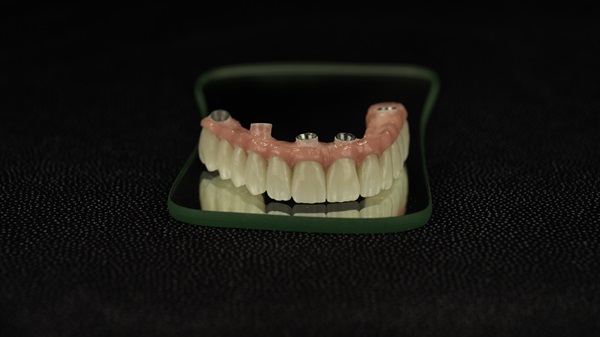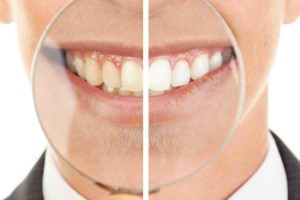How Does a Dental Filling Fix a Cavity?

Tooth decay is a very common dental issue among people of all ages. When a cavity develops, a dental filling can be used to make repairs. Although the procedure is relatively simple, it can still be very effective at repairing a tooth and stopping the spread of tooth decay.
Understanding dental fillings
According to the American Dental Association, most people will develop at least one cavity in their lifetime, with 80% of Americans experiencing some type of tooth decay by age 20. While many people may be nervous about this type of dental work, it is a straightforward, routine process that requires very little recovery time. Typically, a patient will feel more relief than discomfort once the procedure is complete.
If new tooth pain or sensitivity develops in a specific area, especially when eating or drinking, a cavity may be forming. If these symptoms do not improve within a few days, call your dentist to determine your next steps. They will likely schedule an appointment for an evaluation and a possible dental filling.
The process
There are many ways a dentist can detect a cavity. Severe tooth decay can be noticeable from a visual inspection alone, especially if tooth discoloration has occurred. Probing with dental tools can also help dentists detect changes in the enamel surface that result from erosion. X-rays are often used to inspect for decay below the gum line. They can also help dentists see just how far a cavity has progressed.
Once a dentist has determined that a dental filling is needed, they will ensure the patient is comfortable before starting the procedure. The first step is often numbing the area with a local anesthetic. Once this is administered, the patient should not feel any pain during the entire treatment.
To begin, the dentist will remove all decayed tissue from the tooth, often with the use of a dental drill or pick. Once all of the diseased material is gone, the remaining structures are thoroughly cleaned so no traces of bacteria remain. The new hole in the tooth is filled with either a metal or composite material, which is packed in tightly to form a secure seal. This prevents food particles and bacteria from making their way inside again.
The filling is usually set with the help of a dental light, which speeds up the curing process. Once everything has hardened, the dentist may use tools to gently reshape the surface of the filling as needed so it matches the patient's natural tooth shape and bite pattern. With this final step, the procedure is complete.
Material options
When it comes to the type of dental filling you receive, you may have some options. Most are made of either a metal alloy called amalgam, or a composite resin compound made of plastic and glass particles. Both filling materials are safe and effective and have their pros and cons. Metal fillings are more durable and can last for more than 15 years with good dental hygiene. However, the material can cause sensitivity issues in some patients and the results can be an eyesore. They also contain trace amounts of mercury, and while the level is considered safe by the American Dental Association, some people are still uncomfortable with this component.
Composite resin fillings are popular among dental patients because they have a more natural appearance and blend in easily with the teeth. However, they are less durable than metal fillings and are more prone to damage. They typically last between 10 and 12 years with proper home care. A dentist can help you choose the right option for your situation.
Follow-up care
Patients can expect minimal swelling and discomfort once the dental filling procedure is complete. Dentists often recommend consuming only liquids until all numbness has dissipated to avoid injuring the tongue and soft tissues. While the area may be a little sore, pain should be minimal if not nonexistent. Warm salt water rinses can help keep the area clean while relieving discomfort.
You should feel back to normal by the next day and can resume normal brushing and flossing at this time. In fact, these practices are very important as they help prevent future tooth decay, thus prolonging the life of the filling. Avoid extremely hot or cold foods for the first few days to prevent sensitivity issues.
Conclusion
Getting a dental filling is a simple and effective way to fix a cavity. This procedure can help preserve your oral health while preventing the need for more invasive dental work down the road. If you suspect you may have a cavity, contact a dentist today.
Request an appointment here: https://jacksonheightdental.com or call 82nd St. Dental at (718) 709-3883 for an appointment in our Jackson Heights office.
Check out what others are saying about our dental services on Yelp: Composite Fillings in Jackson Heights, NY.
Recent Posts
Dentists are so very misunderstood. And many people are so leery of going to the dentist, they wait until the pain from untreated dental issues becomes more terrifying than their phobia of the dentist. The irony is that if you keep your routine dental appointments and maintain good oral habits, you are unlikely to ever…
No prep veneers are shells that cover the front of the teeth. A cosmetic dentist near you will use these veneers to hide a variety of cosmetic issues. However, no prep veneers are not your only option for fixing cosmetic issues. You can also choose crowns or whitening procedures to improve your smile.While a veneer…
Smile makeovers are typically performed by a general dentist. However, cosmetic dentistry is a large part of a smile makeover that warrants a consultation with a dentist who specializes in cosmetics. There are so many cosmetic dentistry procedures that one can choose from when undergoing a smile makeover. Being aware of popular procedures can help patients…
Wondering what a cosmetic dentist can do for your smile? Read on to learn more. A great smile can be a big self-esteem booster and a way to leave good first impressions. However, not all people have an aesthetically pleasing smile. Fortunately, a cosmetic dentist can help you improve the appearance of your teeth, gums,…






